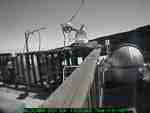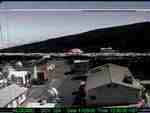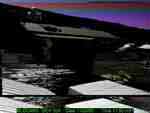More than two years after road access and electrical power to the Mauna Loa Observatory was cut off by lava flows, NOAA staff continue to make critical measurements of the atmosphere and other environmental variables at the remote site.
In 2023, observatory staff installed solar panels at the site and resumed some measurements, including the independent carbon dioxide monitoring programs run by the Global Monitoring Laboratory and Scripps Institution of Oceanography, as well as other atmospheric measurements.
Construction of a temporary road to access the observatory site is anticipated to begin in summer 2025.
Media can contact: Theo Stein (303) 819-7409 (theo.stein@noaa.gov)
Organization(s):
 National Oceanic and Atmospheric Administration (NOAA), Earth System Research Laboratory (ESRL)
National Oceanic and Atmospheric Administration (NOAA), Earth System Research Laboratory (ESRL)
 NASA Jet Propulsion Laboratory (JPL)
NASA Jet Propulsion Laboratory (JPL)
 Meteorological Service of Canada (MSC) - Atmospheric Environment Services (AES)
Meteorological Service of Canada (MSC) - Atmospheric Environment Services (AES)
Smithsonian Institute on Mauna Kea.
What does this program measure?
This program takes images of the sky at Mauna Loa observatory and Mauna Kea sites stored in jpg format.
How does this program work?
Various types of digital CCD cameras and computers connected on the network. Measurements at MLO are continuous. Images are posted online at the MLO web site and are thus available to the public.
Click here to view Today's Mauna Loa Web Camera page.
Why is this research important?
To archive images which can be use to aid data analysis which is done later in time.
Are there any trends in the data?
Not Applicable.
How does this program fit into the big picture?
What is it's role in global climate change?
Not Applicable.
Comments and References
Lead Investigator(s):
Darryl Kuniyuki
808-933-6965 (x236)
MLO Contact(s):
Darryl Kuniyuki
808-933-6965
Preston Sato
808-933-6965 (x236)
Web Site(s)
http://www.mlo.noaa.gov/
LiveCam/Fcam.htm
Date Started
1996




